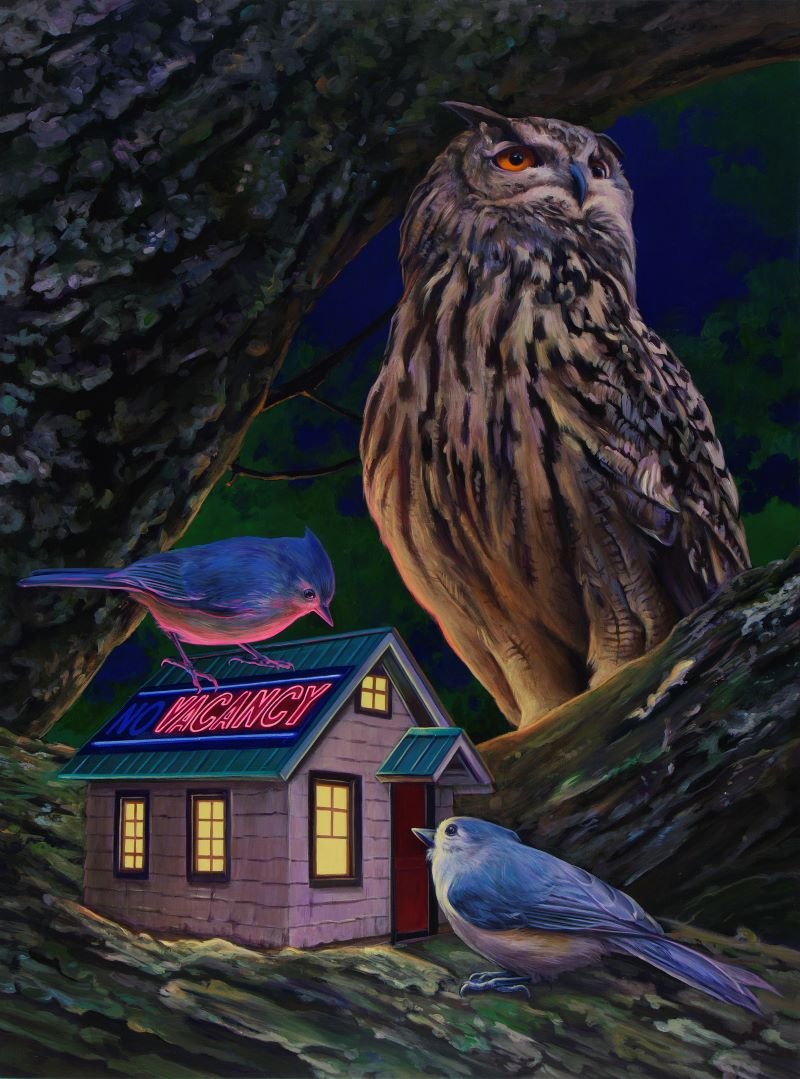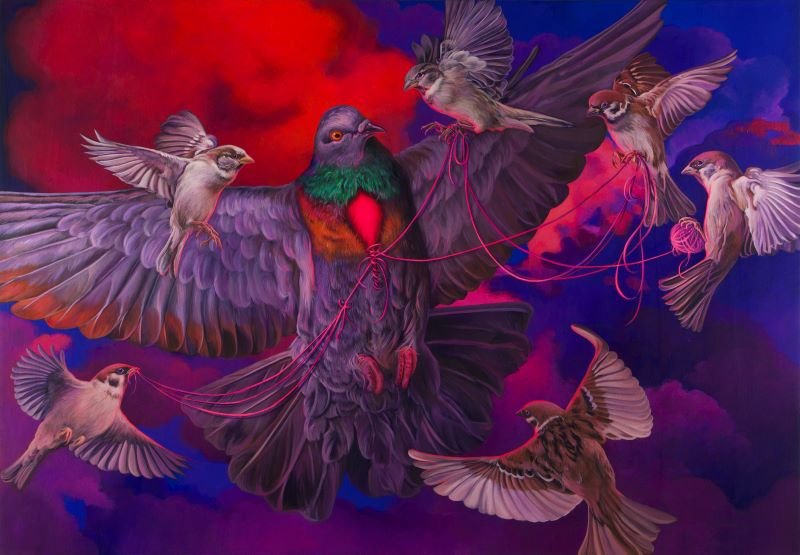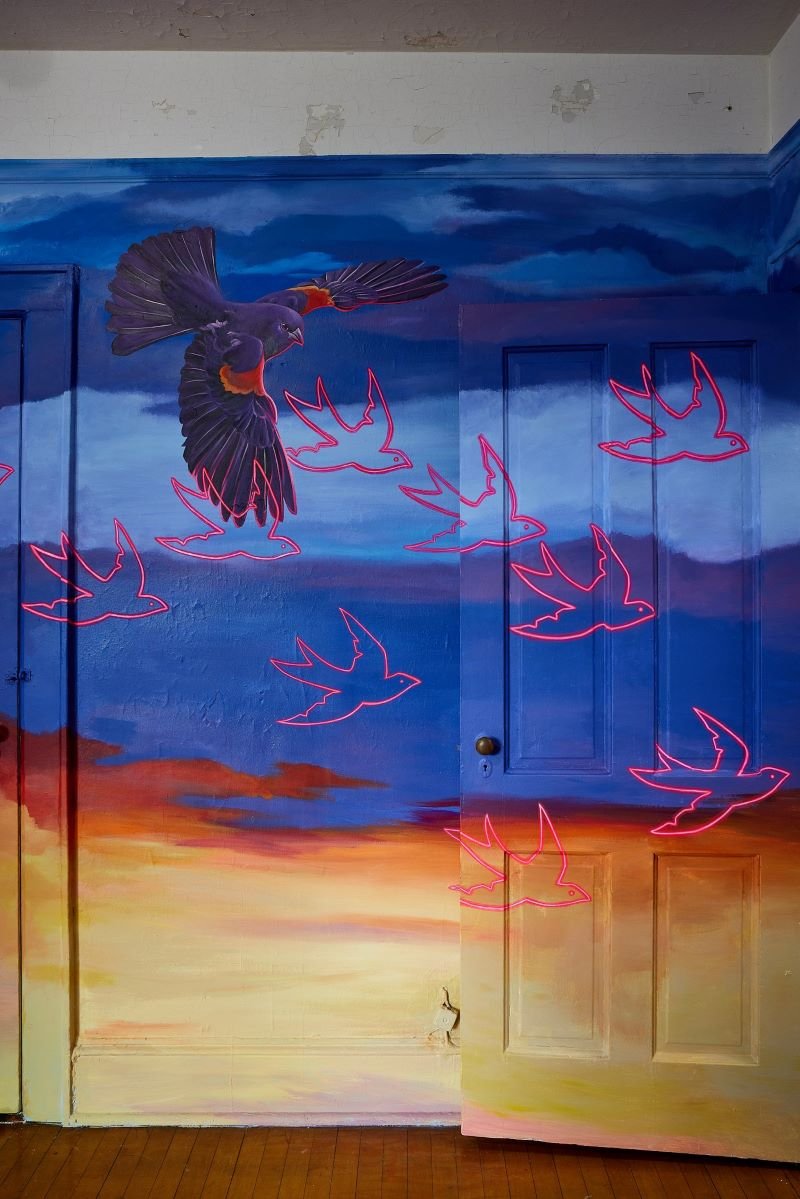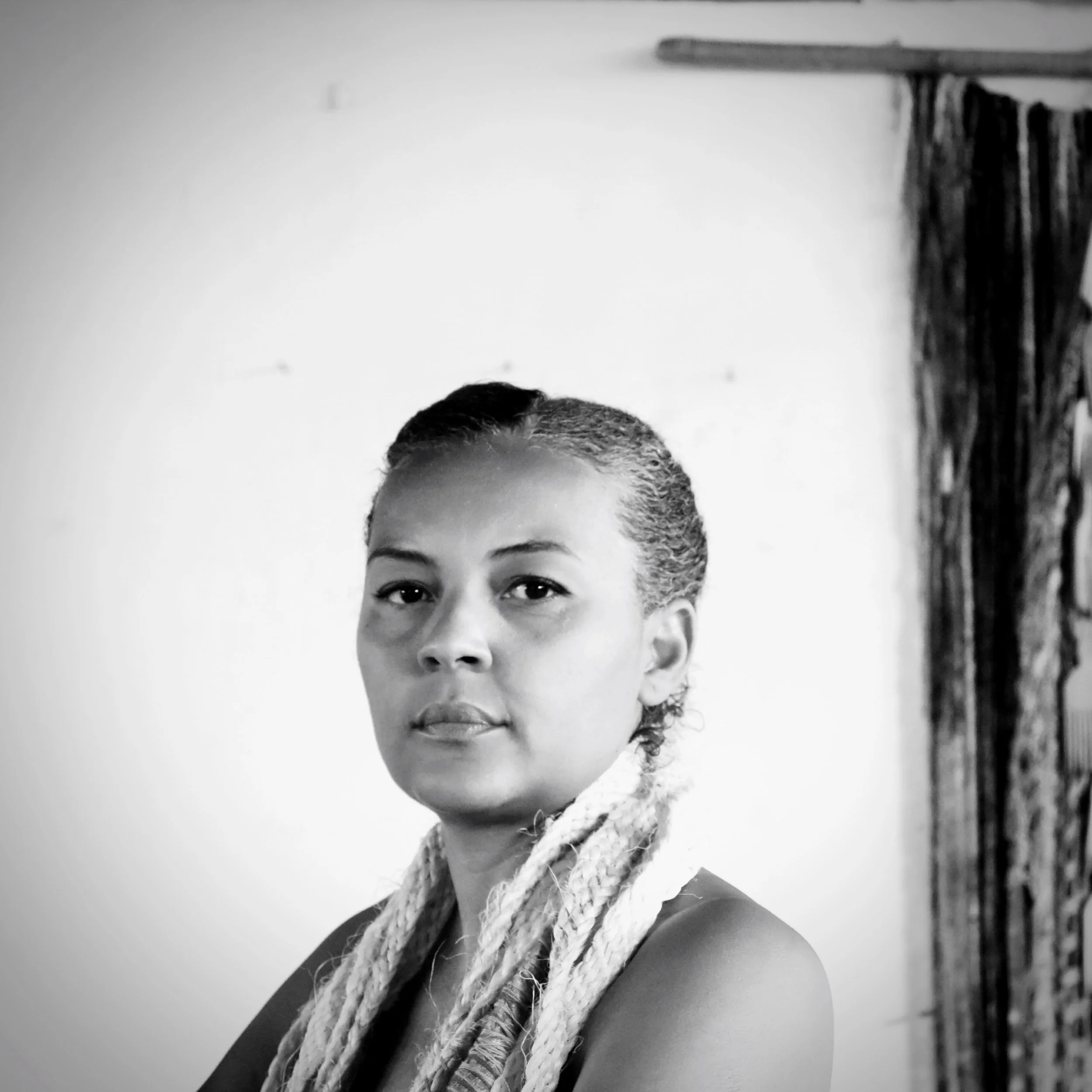GIGI CHEN'S neon naturalism
Photo by Bill Wadman
Gigi Chen’s work creates an aesthetic that combines her training as a traditional animator and painter, along with her love of the techniques of Old Masters. Entrenched in the art of storytelling, the work pulls together her love of contemporary idioms of cartooning, photo realism, texture, and design to produce works that coalesce into Love, Craft, and Fun.
Born in Guang Dong, China, and raised in New York, Gigi’s exhibition credits include Stone Sparrow Gallery, Superfine! Art Fair, Deep Space Gallery, and Antler Gallery.
In this interview, Gigi discusses her deep admiration of birds and why she loves to place them in settings that mix the natural world with artificial aspects such as neon. She has work in the group show MOTHER EARTH at NYC’s Stone Sparrow Gallery, on display through July 29, 2023.
Interview by Interlocutor Magazine
You have artwork on display at MOTHER EARTH, a group show at NYC's Stone Sparrow Gallery up until July 29. How do you think your works shown here comment on or express the exhibition’s themes of “motherhood, ecological conservation, and the natural earth”?
Nature is such a central part of my life and work. I grew up in Queens in New York City and never even saw the woods until I was a young adult. It was such a sublime feeling when I experienced natural darkness in a forest for the first time. The vastness of the fear and excitement I first felt being in the woods is something I deeply remember. While I still live in the city, all I truly daydream about is going outside.
My work for the MOTHER EARTH show is about that close connection between nature and mythology. My paintings draw on my memories of childhood, whimsy, and storytelling. The stories that nature provides intersect with our own personal experiences, and they mirror one another back and forth. My work is generally about the search for the feeling of home, which shows up usually as houses with the creatures (usually birds) acting as conduits for myself and my stories.
My new piece in the show is called “Vacancy.” In the winter of 2023, someone cut the enclosure of Flaco, a Eurasian Eagle-Owl that was living in the Central Park Zoo. He escaped and the zookeepers were unable to get him back. He now mostly lives in the North Woods of Central Park, with birders and the zookeepers continuing to keep an eye on him. He seems to be doing OK.
I visit Flaco whenever I go bird watching in the North Woods and have photographed him on several occasions. He is truly a New York story, making it in the Big City. My painting shows him free, sitting in his favorite tree, looking away from the little house with the neon words “Vacancy.” He never has to look back on his former home again.
Vacancy, 18 x 24 inches, Acrylic on Wood
A Collective Glow, 2022, Acrylic on Wood, 22 ½ x 32 inches
You are an avid birder, and in recent years, your work has focused on the intricate details of birds. How did you initially get involved in birding, and when did you decide to make birds a focus of your work? What do birds represent to you thematically?
I am what is referred to as a “Pandemic Birder” because I found the hobby when attending public spaces was limited and I only had a couple of friends to hang out with. I even got a big lens for my camera and binoculars to spy on these little creatures.
Before picking up the hobby, birds were already a big part of my work for several years. When I was in college, my aesthetics professor showed us pictures of the storied Bowerbird. The Bowerbird is a bird that resides in Papua New Guinea and Australia and in order for the male to attract a mate, he must collect a variety of objects and arrange them just so in front of a twig structure called a Bower. The female bird comes down to check out his handy work and if she is impressed, she gives him the signal to dance for her. If she likes the whole package, then they mate. These bowers are occasionally elaborate and always impressive, and the story of the Bowerbird left a big impression on me. For about six years, I collected objects as well and created bowers in my apartment and I created a whole body of artwork based on the story of the bowerbird.
When I became a birder, I started thinking outside of the bowerbird story. I love birds even more now that I am out looking for them. They all have their own stories, and I really only paint the birds that I have a close connection to, even if I have never seen them. (In fact, I have not yet seen a Bowerbird.) Viewing these tiny creatures in their natural habitats allows me to feel closer to nature and really appreciate their delicate bodies and subtle movements. And the best part? I get to go outside of the studio and discover birds in unlikely places like under bridges and in random corners of buildings. They are truly adaptable and miraculous.
Devotion, 20 x 24 inches, Acrylic on Wood
If We Could Only Wind Down, 2022, 24 x 36 inches, Acrylic on Wood - Private Collection
The wide range of bird species and the vibrant ways that you depict them are very alluring and whimsical. What is your process for studying birds in various modes of repose or flight, and what are some of the main challenges you've encountered with depicting them in a realistic but also heightened and often surreal manner?
Birds themselves are already heightened and surreal! They are like tiny little machines that weigh so little and carry so much energy and speed. Humans have to work to create that kind of power. Birds are naturally engineered to be perfect.
When I go out birding, I watch them very closely and carry around a camera with a pretty wide range. Taking photos of birds has become my biggest challenge after figuring out painting techniques. They are super-fast and do not care about my existence. They are just living their lives and I try my best not to interfere with their space. In general, I rely on online photo resources for my work, but since picking up bird photography, I really prefer to use my own photos if I can help it. So far, the hardest thing is feeling confident in my photography skills as a beginner and trying to capture the birds in flight, which I have not always been successful at.
Painting feathers has become second nature over the years. I really enjoy creating an impression of feathers and not to go insane getting each hair. The birds are about movement and shapes. As long as I have chosen a good pose, with a good story behind the image, then I can feel good about allowing some parts of the work to look less photorealistic. This creates a sense of depth and a little magic.
A Grand Debut, 2021, 24 x 30 inches, Acrylic on Wood -Private Collection
Find Me Under The Lights, 18 x 24 inches, Acrylic on Wood
What is a bird species that you especially love observing and that you enjoy painting the most?
I have a special love for the local New York City birds like the pigeons and sparrows. Pigeons get such a bad rap here and are unfairly called “Flying Rats.” When you actually look at them closely, pigeons have these gorgeous iridescent feathers, and each has their own individual markings. They are also intelligent, communal, and have a great sense of direction.
Out For The Evening, 2022, 20 x 24 inches, Acrylic on Wood - Private Collection
Curiously Illuminated, 2021, Acrylic on Wood, 16 x 20 inches - Private Collection
Neon is also present in several of your works (for example, birds cling onto tiny neon-framed houses in “Hold on Tight” and “Home Away From Home Away From Home” - neon also appears in the shape of birds in your Governors Island mural “In Search Of Home”) - what attracts you to the artificial vibrancy of neon lights, especially when juxtaposed with the hyper naturalistic worlds of nature and birds that you depict?
Civilization was built on the back of nature, and you really cannot separate them. Birds nest on the cornices of buildings, and I have seen groundhogs burrowing into the land next to the Cloisters in Uptown Manhattan.
The neon lights are my way of acknowledging the relationship between natural and artificial. They also create an effect that adds depth to the work and allows me to illuminate a night scene to tell a completely different kind of story.
Sometimes, when I am thinking of a composition, I can actually imagine what the scene would look like if it took place in the daytime, as well as a version at night. I try to make that decision with care because I always worry that the neon will become gimmicky.
Hold On Tight, 2021, 11 x 14 inches, Acrylic on Wood
Home Away From Home Away From Home, 2021, Acrylic on Wood, 20 x 24 inches
As part of a residency in 2022, you created an absolutely gorgeous full-room mural inside one of the disused homes on NYC's Governors Island. Could you discuss the work and how it resonates with you personally, along with the ways that creating such a large-scale piece posed unique challenges (and also offered unique creative rewards) for you?
That residency project with 4Heads in 2022 was a really big deal for me. I had always wanted to get a studio on Governor’s Island, and I love 4Heads because they were such pioneers of the arts on the island. I have been doing indoor murals for over ten years, and they have usually been for private clients and not seen by the public. This project would be viewed by visitors of the Island, and I wanted it to be something that I could use to not only showcase my large-scale painting abilities but also a way for me to connect to anyone walking into the room.
I looked back at my recent body of work and the themes I have been exploring: Home, Love, and Safety. In 2021, I had done a painting called “Home Away From Home Away From Home” about my mother, who had passed away in 2009. I painted her as a great blue heron with a neon house on her back, with three red-winged blackbirds behind her. The red-wings represent my two sisters and I, forever chasing her and the sense of home. My mother was 50 years old when she passed away. During my residency, I was 40 years old, and I would ask myself, “How do I want to spend the next 10 years of my life?”
Click here to view many more images for a 360-degree view of Gigi’s Governors Island mural
For the mural, I decided to expand on that initial painting and create a full 360 degree mural that included a whole sweep of linear neon birds, acting as spirits in the sky, also chasing my mother blue heron after exploding from a giant neon bird house, held up by the birds that I have been seeing on Governor’s Island like pigeons and swallows. The whole composition grew organically with the neon birds tying the whole room together visually, culminating in a large neon circle. The circle represented the endless cycle of life and death and the relationships that keep us going.
Painting the mural itself was exhausting. With my commissioned work, I would have a budget and an assistant. Because this was for myself, I had my friends volunteer to help me paint an initial flat base coat of color but then I was completely on my own. Since this was a temporary installation, I used house paint and mostly cheap craft paint. All my murals are back-breaking labor but this was my personal passion project so it just felt really different. This was for me.
The reception to the piece was one of the most profound experiences of my life. People would walk in, see how beautiful it was and then I would say “Would you like me to tell you about the project?” I always asked. If they said “yes”, I would tell them about my mother, and it was almost always really emotional. When I think about it, I am not sure if I ever fully processed my own grief before that time. I was 27 years old when she passed, and I partied a whole lot during that time. This mural project allowed me to really dive deep and listen to very personal stories from mostly complete strangers. There was a strong connection between past and present, grief and love that was happening in that room. To make those connections day after day during our time at the residency, allowed me to feel so much less alone in my feelings. After that, I honestly feel like I was set free from my sadness and felt some peace.
MOTHER EARTH is on display at NYC’s Stone Sparrow Gallery through July 29.
Special thanks to Dan Alvarado for assistance with this interview.

















